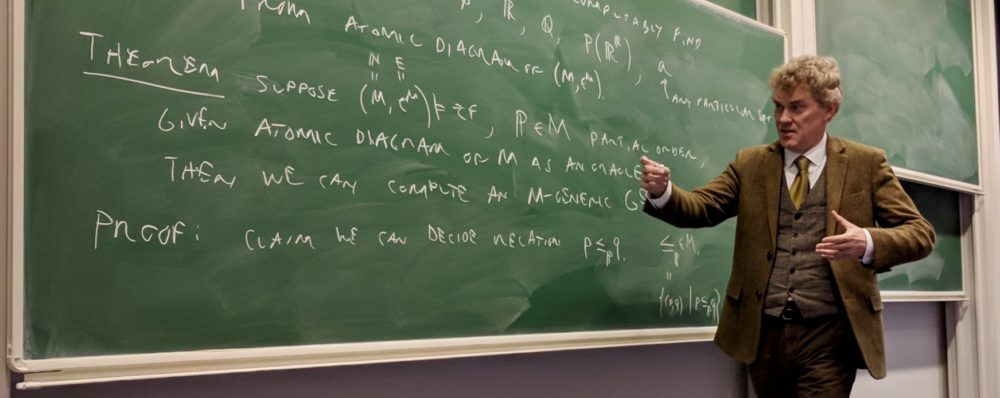 This will be a talk for the CUNY Set Theory Seminar on November 6, 2015.
This will be a talk for the CUNY Set Theory Seminar on November 6, 2015.
The Riemann rearrangement theorem states that a convergent real series is absolutely convergent if and only if the value of the sum is invariant under all rearrangements by any permutation on the natural numbers; furthermore, if the series is merely conditionally convergent, then one may find rearrangements for which the new sum has any desired (extended) real value or which becomes non-convergent. In recent joint work with Andreas Blass, Will Brian, myself, Michael Hardy and Paul Larson, based on an exchange in reply to a Hardy’s MathOverflow question on the topic, we investigate the minimal size of a family of permutations that can be used in this manner to test an arbitrary convergent series for absolute convergence.
Specifically, we define the rearrangement number (“double-r”), a new cardinal characteristic of the continuum, to be the smallest cardinality of a set of permutations of the natural numbers, such that if a convergent real series remains convergent and with the same sum after all rearrangements by a permutation , then it is absolutely convergent. The corresponding rearrangement number for sums, denoted , is the smallest cardinality of a family of permutations, such that if a series is conditionally convergent, then there is a rearrangement , by some permutation , which converges to a different sum. We investigate the basic properties of these numbers, and explore their relations with other cardinal characteristics of the continuum. Our main results are that , that , and that is relatively consistent.
MathOverflow question | CUNY Set Theory Seminar
 This will be a talk for the CUNY Set Theory Seminar on November 6, 2015.
This will be a talk for the CUNY Set Theory Seminar on November 6, 2015.
 This will be a talk for the CUNY Set Theory Seminar on November 6, 2015.
This will be a talk for the CUNY Set Theory Seminar on November 6, 2015.
The paper is still in preparation, but we know much more than currently appears on the MathOverflow posts. Once we have a suitable draft, we’ll place it on the arxiv and also update the MO posts.
The paper is now available. See http://jdh.hamkins.org/the-rearrangement-number/.
Pingback: The rearrangement number | Joel David Hamkins